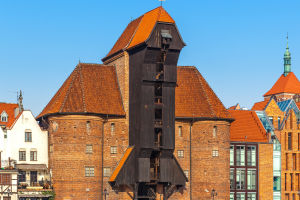The open road stretching endlessly ahead, the rugged mountains casting shadows across the landscape, and the warm African sun lighting the way — this is what an Out of Africa Road Trip offers to Lykkers in search of adventure, discovery, and awe-inspiring landscapes.
Traveling across Africa by road is an unforgettable journey that combines freedom, scenic beauty, and the joy of exploring diverse terrains, from vast deserts to lush green valleys.
The Appeal of an African Road Trip
There’s something truly special about exploring Africa by road. It offers a slower, more immersive experience than flying, allowing you to see the landscape change gradually and take in the small towns and rural communities along the way. For Lykkers seeking an authentic connection with nature, the wide open spaces and panoramic views from your vehicle are as much a part of the journey as the destinations themselves.
This particular stretch of road, cutting through a remote mountainous region, promises adventure and peace in equal measure. The towering hills in the distance create a dramatic backdrop, and the ever-changing colors of the terrain give you a deeper appreciation of the African landscape.
Planning Your Trip: Routes and Essentials
If you're planning a road trip across Africa, it's important to prepare for the unique challenges and rewards of traveling across such a vast continent. Whether you're starting your journey from North Africa or South Africa, or somewhere in between, planning is key to enjoying a smooth trip.
Renting a Vehicle: Most travelers opt to rent a camper van or 4x4 vehicle. Rental prices typically range from $50 to $150 per day, depending on the vehicle type and features. A 4x4 is ideal for handling the uneven terrain and dirt roads you may encounter in more remote areas.
Best Time to Visit: The ideal time to embark on an African road trip depends on the region. In Northern Africa, the best time to visit is from October to April, when the temperatures are cooler. For Southern Africa, May to September is ideal, offering mild temperatures and fewer chances of rain, particularly in desert regions like Namibia and Botswana.
Fuel Stops and Distances: Fuel stations can be sparse in more remote areas, so it’s important to fill up whenever you get the chance. Be sure to carry extra fuel cans, as distances between towns can be significant. Fuel prices in Africa typically range from $1 to $1.50 per liter.
What to See and Do
This mountainous region offers a wide variety of experiences. Whether you're traveling to observe wildlife, hike scenic trails, or simply enjoy the tranquility of the open road, there is no shortage of opportunities for Lykkers to connect with nature and local culture.
Scenic Drives: Some of the most stunning views on an African road trip come from simply driving through the landscape. This route, with its winding roads and mountain vistas, provides ample chances to pull over and snap pictures or simply take in the view.
Wildlife Watching: Africa’s rich biodiversity means that wildlife encounters are common. Depending on your route, you might pass through or near national parks and wildlife reserves. In places like Etosha National Park (Namibia) or Kruger National Park (South Africa), you can spot elephants, giraffes, and even lions from your vehicle. Entry fees to these parks typically range from $10 to $25 per person.
Local Villages and Markets: Along the way, you’ll pass small villages where you can stop and experience the local culture. Many travelers enjoy visiting local markets to purchase handmade crafts, fresh produce, or enjoy regional dishes. Be sure to have some local currency on hand, as credit cards may not be accepted in rural areas.
Camping and Accommodation
One of the best parts of a road trip is having the flexibility to stop and camp in beautiful, remote locations. Many travelers choose to camp either in designated campsites or wild camp under the stars.
Designated Campsites: Many national parks and private reserves offer well-maintained campsites, with prices ranging from $10 to $40 per night depending on the location and facilities offered (toilets, showers, etc.).
Wild Camping: In some areas, wild camping is permitted, allowing you to experience the full majesty of Africa’s wilderness without the noise or lights of modern civilization. Be sure to check local regulations before setting up camp in non-designated areas.
Packing Essentials
Preparing for an African road trip means packing smart. Here’s a list of essentials to ensure your trip is safe and comfortable:
Water and Food Supplies: Always carry enough water, especially when traveling through desert areas. It’s recommended to have at least 5 liters of water per person per day. Non-perishable food items, such as canned goods and snacks, are also a good idea in case you’re far from restaurants or markets.
Navigation Tools: A GPS system is crucial for navigating remote areas, but it’s also wise to carry paper maps in case you lose signal.
Emergency Kit: Include a first aid kit, extra fuel, a spare tire, and tools for vehicle repairs. Cell signal can be weak in remote areas, so carrying a satellite phone or a reliable emergency communication device is highly recommended.
Warm Clothing: Even in hot regions, desert temperatures can drop dramatically at night. Be sure to bring warm layers and a sleeping bag suitable for cold conditions.
Conclusion
An Out of Africa Road Trip is more than just a journey — it's an invitation to experience the continent’s raw beauty, diverse landscapes, and quiet solitude. From the moment your wheels hit the open road, you’ll feel a sense of freedom, adventure, and connection to the landscape that will stay with you long after the trip ends. Whether you’re watching the sunrise over the mountains or camping under a sky filled with stars, this road trip offers Lykkers an unforgettable escape into Africa’s wild heart.


